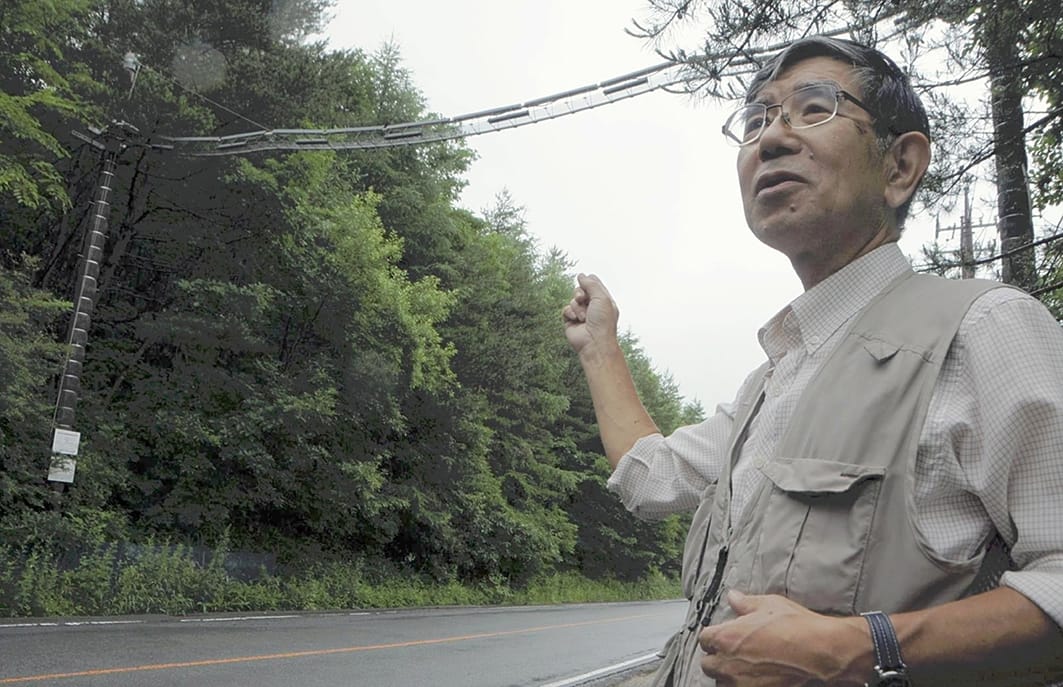Above a road through a forest hangs a long, thin suspension bridge resembling a power line. Japanese dormice, small field mice and squirrels — forest-dwelling species that are recognized as national natural monuments — scramble along it as if it were just another tree branch.
Koichi Otake, 66, of Nerima Ward, Tokyo, who was previously an engineer for leading general contractor Taisei Corp., is promoting a project for the construction of these suspension bridges, which are to be used by small animals inhabiting forests that have been split by development.
“They’re just as cute as could be. I fell in love with dormice,” Otake said with a sheepish grin. The dormouse is a rodent about 10 centimeters long and weighing around 20 grams. It spends half of the year hibernating, and its adorable curled-up sleeping posture earned it the “round mouse” sobriquet.
Otake’s work at Taisei included geological surveys for the construction of dams and tunnels and technological development for road foundations. His first encounter with the dormouse came after he attended a work-related lecture by a researcher in small-animal protection.



